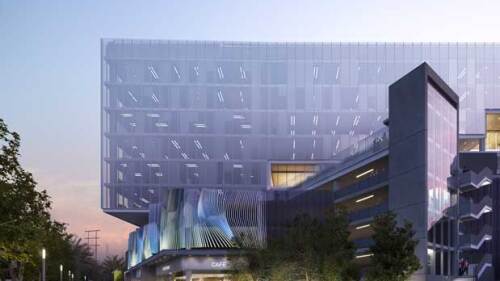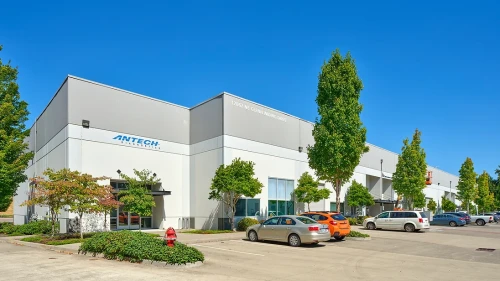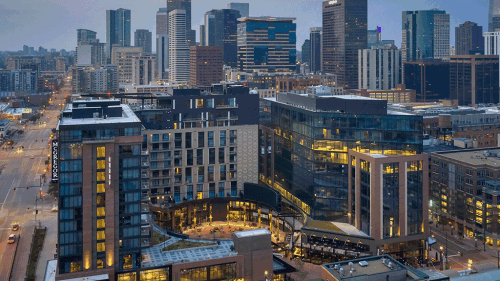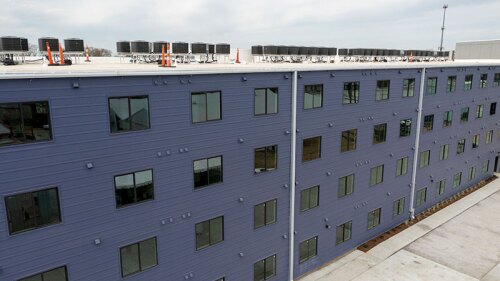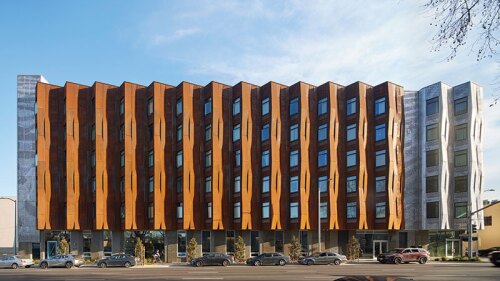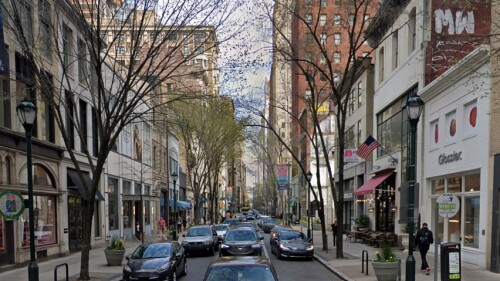Property Types
Hotels and Resorts
Ian Wilson, senior vice president of nongaming operations and chief operating officer, Marina Bay Sands, addressed the 2019 ULI Asia Pacific Leadership Convivium, explaining how the resort-casino operator uses data in its operations.
Hotels and office buildings are taking on many of each other’s characteristics in terms of design and use. This confluence has several drivers, among them the evolution of technology, shifts in guest and tenant expectations, and the increasing mobility of the American workforce.
New, tech-based companies create temporary apartment hotels, monetize absorption vacancies, and stimulate urban mixed-use projects.
Industrial
Demand for industrial space has pushed vacancies to historically low levels. But the high tide may no longer be lifting all boats. A surge in new supply along with a growing appetite for more modern facilities is putting more pressure on the sector’s aging building stock. Legacy buildings are having a tougher time keeping up with the changing demands of today’s space users.
A confluence of economic and geopolitical trends is changing global supply chains and driving increased demand for industrial and logistics real estate in Southeast Asia, according to industry leaders at ULI Asia Pacific’s REImagine conference.
The COVID-19 pandemic made 2021 a historic year for the shipping and logistics industry, as rising e-commerce sent large retailers and general merchandisers scrambling for warehouse space to hold their inventory, supply-chain issues delayed shipments, real estate developers strained to keep up with demand, and local governments struggled to issue permits quickly with employees working from home.
Mixed-Use
The Colorado Rockies’ ownership leased a parking lot adjacent to Coors Field in order to construct McGregor Square, a 3.2-acre (1.3 ha) mixed-use development that serves baseball fans, tourists, and the broader community.
The historic Powell Avenue Steam Plant, located in downtown Birmingham, Alabama, represents an extraordinary opportunity to reimagine a piece of the city’s industrial heritage. Spanning a 3.09-acre (1.24 ha) site in the heart of Birmingham’s vibrant Parkside District, this historic property is poised to become a cornerstone of downtown’s continued revitalization.
Canada’s real estate market is in the midst of a pivotal shift as the Bank of Canada (BoC) rolls back what has been “higher for longer” interest rates. Yet despite welcome relief on financing costs, real estate leaders are still moving somewhat cautiously amid uncertainty and fluid market dynamics.
Multifamily
The scarcity of on-campus housing—especially affordable housing—means many students have little choice but to forgo the convenience, economy, and other benefits of campus life. Now, California State University, Northridge (CSUN) has become the first in the CSU system to address this disparity by adding new on-campus housing that is both affordable and can be quickly replicated across the entire system to bolster its on-campus populations.
Jeff Lubell recently joined ULI’s Terwilliger Center for Housing as a senior fellow. In this capacity, on a part-time basis, he will provide strategic direction, engage in research, and offer technical support to further the center’s commitment to ensuring that everyone has a home which meets their needs at a price they can afford. He’ll spend the balance of his time working with the Housing Innovations Group, which provides policy consulting services to state and local governments, foundations, nonprofits, and other clients.
The Opportunity Zone program, a national model to spur private investment of housing in underserved areas, has been extended by Congress beyond 2026, marking a significant opportunity for real estate professionals. This innovative initiative not only helps rebuild communities but is a win-win for residents, property developers, and investors. The program’s success in transforming economically distressed areas has proven its value, making it crucial for industry leaders to continue supporting it.
Office
Despite improving return-to-office numbers, the office sector still battles numerous challenges that are resulting in higher loan defaults. According to MSCI Real Assets, office leads the charge on rising distress levels, which have not been seen in more than a decade. Office accounts for nearly half of outstanding distress: $51.6 billion in outstanding distress at the end of fourth quarter 2024, and another $74.7 billion in office properties identified as at risk for “potential” distress.
As buildings become more efficient and run on “cleaner” energy sources, the industry’s attention will need to include embodied carbon—emissions associated with the manufacturing and transportation of building materials, as well as the construction, maintenance and disposal of buildings.
Speakers mixed good news and uncertainty at the “ULI New York: Real Estate Outlook 2025" event, held January 22, 2025, at the Stern School of Business at New York University in Manhattan by ULI New York in partnership with NYU Stern | Chen Institute.
Residental
Many Americans are considered severely rent-burdened, as they spend more than 50 percent of their earnings on housing. For people with disabilities and the elderly, there is a triple whammy—prices are soaring, their incomes are not keeping pace, and only a fraction of housing is built to accommodate those with limited mobility.
The Green and Resilient Retrofit Program, a new program, has made funds available from the Inflation Reduction Act to support decarbonization and resilience upgrades.
Experts discuss the growing crisis of housing attainability for lower- and middle-income households across the United States, including ways the private and public sectors could help increase housing production, preserve existing affordable housing, and give more people access to housing; strategies for encouraging communities to accept more housing construction; and other related trends.
Retail
While retail leasing in the United States has been healthy according to JLL’s Q2 data, retailers have shown a preference for smaller formats while repurposing some parking for other uses.
ULI San Francisco recently hosted a panel revisiting the recommendations made by ULI Advisory Servies panelists to revive the downtown and highlighting the progress that has been made.
The impact of daytime workers on certain types of retail has long been overstated. Yes, they provide critical support for lunch eateries and coffee bars, as well as select services including fitness studios and shoe repair. But downtowns could never count on this demographic for much more than that.


